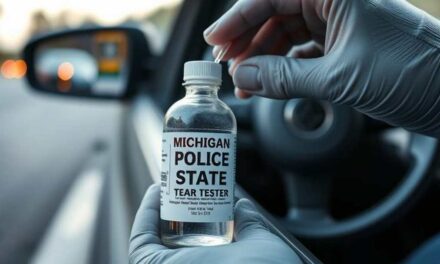Operating While Intoxicated—Marijuana Investigation Checklist
Provided by Michigan’s Traffic Safety Resource Prosecutors
In light of the passage of the Michigan Regulation and Taxation of Marihuana Act (MRTMA), it is anticipated that officers will have to establish impairment in all Operating While Intoxicated (OWI) investigations involving marijuana. To establish impairment in these cases, the law requires that officers show that because of the consumption of marijuana, a person’s ability to operate a motor vehicle in a normal manner was substantially lessened.
We know from the science that THC disappears from the blood stream very quickly (90% gone within 90 minutes). The sooner a blood draw can occur, the better.
If possible, it is recommended that two officers (at least one should be ARIDE or DRE trained) get involved given how quickly THC dissipates from the blood.
- Once probable cause is established, one officer can secure the blood draw while the second officer searches for evidence from the scene or vehicle.
Potential evidence to look for that can be seized pursuant to an inventory search (make sure your inventory search policy is up to date):
- Any liquid that could contain THC
- Any edible substance that could contain THC
- Vaping devices that could contain THC
- Skin patches on the driver—could be THC—take a picture and secure it as evidence
- Any oil/shatter/wax
- Any article that could be used to smoke marijuana
- Any container that could be used to carry THC (note the label information or lack of)
Investigation
1. Vehicle in Motion
a. Look for normal signs of impairment (weaving, excess speed, slow driving, etc.)
2. Personal Contact
a. Indicators of impairment
i. Smell of marijuana (make sure this is not the only indicator)
ii. Blood shot eyes
iii. Other signs to document (see attached sheets)
iv. Poor perception of time and distance or location and direction of travel
v. Body tremors
vi. Eyelid tremors
vii. Disorientation
viii. Lack of concentration
ix. Increased pulse rate
x. Increased blood pressure
xi. Lack of convergence in the eyes (however, cannabis does not cause HGN/VGN)
b. Statements by driver related to use
i. What did they use
ii. What form (smoking/vaping/eating)
iii. How much
iv. What time was their last use
v. Where did they use it
3. Pre-Arrest Screening
a. Standardized Field Sobriety Tests
i. Horizontal Gaze Nystagmus (HGN) Test. According to the Drug Evaluation and Classification Program (DECP), cannabis alone usually does not cause HGN during this test.
ii. Walk and Turn
iii. One Leg Stand
b. Field Sobriety Tests
i. Lack of Convergence (LOC)
ii. Modified Romberg
iii. Other tests
c. Preliminary Breath Test (PBT)—should still be administered to rule out alcohol impairment
Your decision to arrest or not to arrest should always be based on the “totality of the circumstances.”
In other words, it should always be based on all evidence gathered in all three of these detection phases of your OWI investigation—vehicle in motion, personal contact, and pre-arrest screening.
If all the evidence taken together establishes probable cause to believe that a driver is impaired by marijuana while operating a vehicle, the subject should be arrested.
Read the Gov release PDF –> here
For one of the most recommended attorney for cannabis legal defense go –>Here
As always… Follow the money. If you can.
More Posts
We Know What You Did – Last Time We Looked
Better Call KomornThe Kingpins alway watch their business Will the budtenders and trimmers soon be...
Auction-Style Marketplace for Bulk Buying and Selling Cannabis
Got a Tough Legal Defense Case?Better Call KomornNew Auction Marketplace for Bulk Buying and...
US Cannabis Sales About $30 Billion in 2024
Got a Tough Legal Defense Case?Better Call KomornAccording to VangstThe industry’s definitive...
DOGE Cancels University’s Contract To Monitor Marijuana Potency
Got a Tough Legal Defense Case?Better Call KomornRead it to yourself it out loud....Trump has...
President Replaces Prosecutor Who Threatened Medical Marijuana Dispensary
What just happened?Read it to yourself it out loud....Trump has appointed a new prosecutor to...
The Case of Cannarbor -v- The Michigan Department of Treasury
The Kingpin always collectsThis case involves a dispute between Cannarbor, Inc., a medical...
Michigan Red Flag Law used to Confiscate Guns
Implemented in February 2024, The Red Flag Law allows authorities to seize gunsMichigan judges...
Michigan House Bill NO. 4391
It may just be easier to collect and analyze your tearsThis legislation aims to incorporate saliva...
European Company Is Flooding America With Cannabis Seeds
So many seeds, so little time.As U.S. cannabis companies compete for dispensary licenses, banking...




















